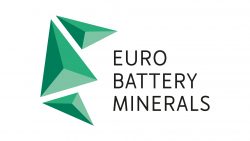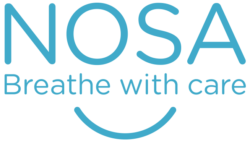2024-05-23

CEO Magnus Tolleshaug and CFO Alexander Karlsen
"We are very proud of our growth. Since the year 2010 we have continued to grow year by year. In 2010, we had about 88 MNOK in sales whereas in 2023 we had 450 MNOK meaning we have a really strong organic track record on growth, which we aim to continue going forward."
For those who have not heard of Vistin Pharma before, please tell us more about your business, what you do, and which markets you address?
Vistin Pharma is a pure-play metformin company, we serve 10 % of the world’s metformin API (Active Pharmaceutical Ingredient) demand through our manufacturing plant in Kragerø, Norway. Metformin is a generic drug, thus we are operating in a generic commodity market. Metformin is a well-known drug, Vistin Pharma has been producing metformin since our production plant was built in 2002 with a great track record of increasing volume, prices, and top-and bottom-line results.
We sell metformin API globally, for example, in Japan, Latin America, the USA, and Canada. Either we have direct sales through agreements with transporters and distributors, or local agent contracts for specific countries or regions, where our limited sales force is benefitting from the local knowledge and network. The total sales are a combination of both direct and indirect sales; however, the majority of sales are direct sales. Furthermore, in the last couple of years, we have worked towards more direct sales as it gives us better margins. The majority of the production volume is shipped to Europe because we typically sell to large well-known, international, pharmaceutical companies, where they convert our API into tablets and ship to their distribution sites around the world. We have registered our metformin in around 100 countries around the world.
The Metformin market is growing 4-6 % annually since people need our medicine regardless of underlying economical market conditions, meaning that the market is rather non-cyclical. Today around 550 million people are suffering from diabetes, whereas 5 million people die each year. Out of the 550 million people with diabetes, 90 % have diabetes type-2, where metformin is the first line treatment: a well-known, low-cost, drug with small to no side effects. A drug that is perfect for low to middle-income countries as a four-week treatment costs around 4 USD. Furthermore, the total amount of people with diabetes is expected to grow by 50 % until 2045, mainly driven by two things: one is that today, many people in parts of the world, are not diagnosed, which is causing a lot of healthcare problems and the actual number of people with diabetes is certainly higher. The second factor is that the population of the world is not able to control their diet, both in the US and in Asia, where they eat far too much unhealthy food such as highly processed food.
Can you tell us more about your metformin HCI, its advantages, and how the product compares to competitors with similar solutions?
Metformin is a commodity product, so how is Norway able to compete with low-cost producers of metformin API? It is because of several variables. First of all, today, you can get Metformin for 4-5 USD or 7-8 USD, depending on how much you are willing to pay for quality, purity, supply security, and reliability. Pharmaceutical companies are willing to pay for quality in order to minimize downstream issues in drug production.
The other part is us being a one-shop stop for metformin. We are dedicated, quick in response to customers, flexible in our supply chain, and able to deliver anywhere in Europe within 24 hours.
Our European customers can thereby have lower levels of inventory since we are a reliable producer. Whereas, if you were to buy metformin from Asia, you would need to stock up inventory because of unforeseen events that could happen in the supply chain.
And thirdly, our cost of goods sold is competitive because of automation. We have a fully automated facility, which we have invested in for the last couple of years. We produce metformin 24 hours, 365 days of a year, with only one or two planned maintenance stops each year. This means we can keep the COGS low, which combined with our second production line increases the unit of scale for competitiveness.
We also have a sustainable perspective in production. Metformin is a high energy-demanding manufacturing process, and we use 100 % sustainable energy, whereas in India or China, they use coal as their energy source, meaning our carbon footprint is dramatically reduced compared to low-cost production competitors.
Furthermore, much of our success is about having long-lasting customer relationships, as we do not sell in the spot market. Meaning that if we can continue and deliver on our quality there is a high probability that the customers will continue to stick with us as the supplier. We thrive on happy customers, why our goal is to fill the manufacturing plant with existing customers who are growing every year. However, we are also working actively with new customers through our sales team, placing ourselves in the premium segment rather than the lower quality segment as a selling point.
How reliant are you on the underlying prices in the production of metformin? And would you say that you have been able to increase prices historically?
We are very professional in buying raw materials as the majority of COGS comes from two components: DCDA and DMA. We keep a stock and have multi-sourced supply chains, meaning we have three suppliers for each component.
We are dependent on the global price of metformin because since the raw material price goes up, or down, the metformin price correlates, which is the same for everyone in the industry. Our aim is a gross margin of >60 % and we adjust our prices depending on the raw materials price where we have pricing power with customers when the underlying raw material prices increase. During the COVID pandemic, we had a spike in both shipping and raw material, but we were able to keep a reasonable margin, whereas other producers were in the negative area. The long-term customer agreements also come into play here as they rely on the supply and are willing to negotiate to go through these price fluctuations.
Could you elaborate a bit on the new production line? Are you confident that you will reach the annual metformin production of 7000MT?
The decision to invest 100 MNOK in a new production line was made in 2020 and realized in Q1 2022 where we spent the whole year of 2022 to get that line up and running. In 2023 we had 5000MT of metformin production and we are now seeing a sales volume that is benefitting from the new line, where we are positive in increased volumes going forward. You can see a big step in the revenue for 2023, which is great to see that the investment materializing into sales. However, it is not all about capacity, as you want the right customers, and the right sales price and mix. Even if we theoretically can produce 7000MT in the coming years we might sell 6500MT, as we want to maximize profit by having the optimal mix of volume and price. We negotiate volume and price with customers the year before, often in November or December, meaning we will adapt capacity depending on the sales volume going forward. Furthermore, we are confident that we will fill the manufacturing plant and have the capacity over time. That is because we have a great team that has shown this ability earlier in the production plant.
Can you tell us about what trends you are seeing today? And would you say that the current usage of diabetic medicine for weight loss is favorable for Vistin Pharma?
If you read the news, there is a lot of focus on semaglutide from Eli Lilly and Novo Nordisk, however, if we look at the facts, metformin is the base treatment for diabetes type-2 and to get semaglutide you would normally first need to use metformin. These new drugs are working well for diabetic type-2, with the side effect of losing 15-20 % of your body weight if you are severely obese and sticking to the drug for a long time. If you are obese enough you might get Ozempic but the listed cost for a four-week treatment is today 900 USD compared to metformin, which is 3-4 USD. What countries then are willing to reimburse lifelong expensive treatment because people are not changing their diet and habits? Probably not many.
Furthermore, in the lower- and middle-income countries in the world, governments can probably not afford to reimburse these costlier drugs and therefore stick to metformin. Hence, we do not see any short- midterm treats for metformin because it is a cheap drug that works with near to no side-effects and it will continue to be the baseline treatment for diabetes type-2.
Where do you see Vistin Pharma in three years?
We want to see increased production and to continue to fill the plant with both generic and premium volume metformin. Year by year we also want to convert some of the generic metformin to premium so that we annually, do not only increase the total volume but also the premium part of metformin to keep a good margin.
As communicated on our Capital Markets Day in 2023, we want to be a European contract development and manufacturing organization. We saw the first step in that journey in Q1 2024 when we communicated the 15 % acquisition of CF Pharma, a Hungarian API CDMO, which is an interesting company that has a proven track record in both producing and commercializing AP’s. Furthermore, we are opportunistic because of our small debt ratio, strong balance sheet, and high cash conversion. This means opportunities for dividends annually, investments, M&A, etc. depending on which one creates the most shareholder value.
Could you give three reasons as to why Vistin Pharma is a good investment today?
- We are very proud of our growth. Since the year 2010 we have continued to grow year by year. In 2010, we had about 88 MNOK in sales whereas in 2023 we had 450 MNOK meaning we have a really strong organic track record on growth, which we aim to continue going forward. We have also shown stable good cost control since we have a lot of good internal processes and a mindset where we can give good leverage on additional volumes, meaning we can increase the volume more than the cost increases.
- The experience of the management team is great, and we know what we are doing. The board is also professional and long-term thinking. Our chairman has a strong track-record of building successful business and he want us to grow, but in the right order, layer by layer. Meaning, he does not want to see a huge M&A that risks the core business but rather grow steadily in the medium-term.
- We want to do things in the right order, at the right time, to not jeopardize the cash flow from metformin production. We are in a growing market and do not need to steal customers from competitors, we just need to be a part of the growth which we will be. Historically, we have been able to increase the volume, with good prices for us, a high cash conversion rate and showing good margins.





